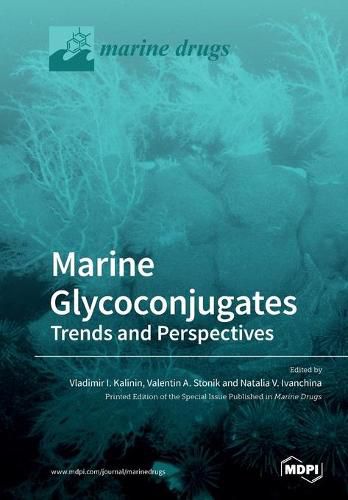Readings Newsletter
Become a Readings Member to make your shopping experience even easier.
Sign in or sign up for free!
You’re not far away from qualifying for FREE standard shipping within Australia
You’ve qualified for FREE standard shipping within Australia
The cart is loading…






This title is printed to order. This book may have been self-published. If so, we cannot guarantee the quality of the content. In the main most books will have gone through the editing process however some may not. We therefore suggest that you be aware of this before ordering this book. If in doubt check either the author or publisher’s details as we are unable to accept any returns unless they are faulty. Please contact us if you have any questions.
The books described marine glycoconjugates. Two articles concern microalgal metabolites such as steroid and sphingoid glycoconjugates, and a glycoprotein from a sea cucumber with interesting biological activities, respectively. One article discusses the fatty acid composition and thermotropic behavior of glycolipids and other membrane lipids of green macrophyte Ulva lactuca. Three articles cover lectin subjects. One review article analyzes perspectives of marine and freshwater lectins’ application in experimental oncology and the therapy of oncological diseases; another article describes the use of a sponge lectin in the construction of a recombinant virus. The third article concerns the function of the immunity of a lectin in producing this compound crinoid. Two articles concern steroid glycosides from starfish, and two others concern triterpene glycosides from sea cucumbers. One article describes the effect of a glycosaminoglycan from the sea cucumber Apostichopus japonicus on hyperglycemia in the liver of insulin-resistant mice. One article concerns the isolation of 10 new triterpene glycosides from a fungus associated with a sea cucumber. The article by Dworaczek et al. characterizes the O-specific polysaccharide (O-antigen) of a bacterial pathogen of common carp by chemical and immunochemical methods. In total, the Special Issue comprises14 articles, including the editorial and two reviews.
$9.00 standard shipping within Australia
FREE standard shipping within Australia for orders over $100.00
Express & International shipping calculated at checkout
This title is printed to order. This book may have been self-published. If so, we cannot guarantee the quality of the content. In the main most books will have gone through the editing process however some may not. We therefore suggest that you be aware of this before ordering this book. If in doubt check either the author or publisher’s details as we are unable to accept any returns unless they are faulty. Please contact us if you have any questions.
The books described marine glycoconjugates. Two articles concern microalgal metabolites such as steroid and sphingoid glycoconjugates, and a glycoprotein from a sea cucumber with interesting biological activities, respectively. One article discusses the fatty acid composition and thermotropic behavior of glycolipids and other membrane lipids of green macrophyte Ulva lactuca. Three articles cover lectin subjects. One review article analyzes perspectives of marine and freshwater lectins’ application in experimental oncology and the therapy of oncological diseases; another article describes the use of a sponge lectin in the construction of a recombinant virus. The third article concerns the function of the immunity of a lectin in producing this compound crinoid. Two articles concern steroid glycosides from starfish, and two others concern triterpene glycosides from sea cucumbers. One article describes the effect of a glycosaminoglycan from the sea cucumber Apostichopus japonicus on hyperglycemia in the liver of insulin-resistant mice. One article concerns the isolation of 10 new triterpene glycosides from a fungus associated with a sea cucumber. The article by Dworaczek et al. characterizes the O-specific polysaccharide (O-antigen) of a bacterial pathogen of common carp by chemical and immunochemical methods. In total, the Special Issue comprises14 articles, including the editorial and two reviews.